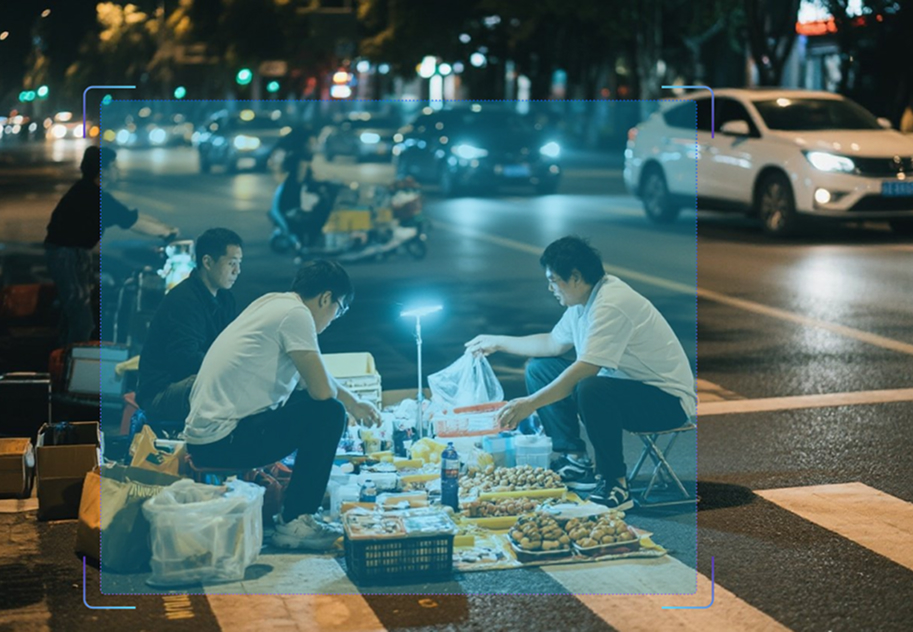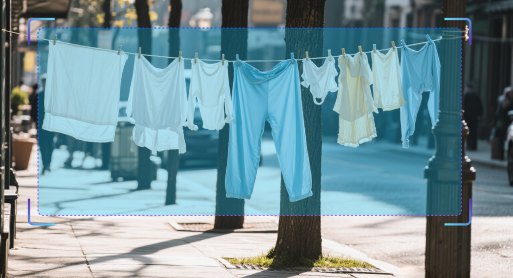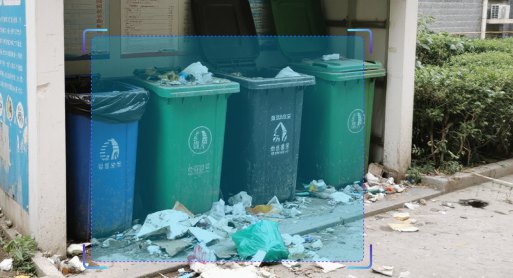
Roadway Encroachment Detection

Algorithm Introduction
Utilizing visual analysis technology to monitor unauthorized commercial activities in public spaces, detect violating objects, and trigger real-time alerts. The system identifies various types of unauthorized vending including umbrellas, outdoor furniture, open-air barbecues, street stalls, and food carts placed beyond predefined regions of interest (ROI), with optimal performance in outdoor environments.
- ● Brightness Requirements: Minimum 30% bright pixel ratio (grayscale value >40) within the ROI
- ● Image Requirements: Optimal detection at 1333×800 resolution
- ● Target Size: Minimum 40 pixels (width) × 66 pixels (height) for resolutions exceeding 1333×800
Application Value
-

Residential Community Entrances
The algorithm conduct real-time monitoring of preset regions of interest (ROIs) around entrances and exits to swiftly address violations such as unauthorized awnings and open-air stalls, preventing them from obstructing residents' daily commutes. -

Subway Stations
The algorithm monitors subway entrances and promptly identifies outdoor tables, chairs, street stalls, and other commercial fixtures obstructing the enterance, preventing pedestrian congestion and ensuring orderly transfers. -

Sidewalks
The algorithm accurately identifies street vendors such as open-air barbecue stalls and fruit stands that occupy public walkways, preventing encroachment on pedestrian passageways and maintaining traffic safety and a clean cityscape.
FAQ
-
Algorithm AccuracyAll algorithms published on the website claim accuracies above 90 %. However, real-world performance drops can occur for the following reasons:
(1) Poor imaging quality, such as
• Strong light, backlight, nighttime, rain, snow, or fog degrading image quality
• Low resolution, motion blur, lens contamination, compression artifacts, or sensor noise
• Targets being partially or fully occluded (common in object detection, tracking, and pose estimation)
(2) The website provides two broad classes of algorithms: general-purpose and long-tail (rare scenes, uncommon object categories, or insufficient training data). Long-tail algorithms typically exhibit weaker generalization.
(3) Accuracy is not guaranteed in boundary or extreme scenarios.
-
Deployment & InferenceWe offer multiple deployment formats—Models, Applets and SDKs.
Compatibility has been verified with more than ten domestic chip vendors, including Huawei Ascend, Iluvatar, and Denglin, ensuring full support for China-made CPUs, GPUs, and NPUs to meet high-grade IT innovation requirements.
For each hardware configuration, we select and deploy a high-accuracy model whose parameter count is optimally matched to the available compute power.
-
How to Customize an AlgorithmAll algorithms showcased on the website come with ready-to-use models and corresponding application examples. If you need further optimization or customization, choose one of the following paths:
(1) Standard Customization (highest accuracy, longer lead time)
Requirements discussion → collect valid data (≥1 000 images or ≥100 video clips from your scenario) → custom algorithm development & deployment → acceptance testing
(2) Rapid Implementation (Monolith:https://monolith.sensefoundry.cn/)
Monolith provides an intuitive, web-based interface that requires no deep AI expertise. In as little as 30 minutes you can upload data, leverage smart annotation, train, and deploy a high-performance vision model end-to-end—dramatically shortening the algorithm production cycle.






